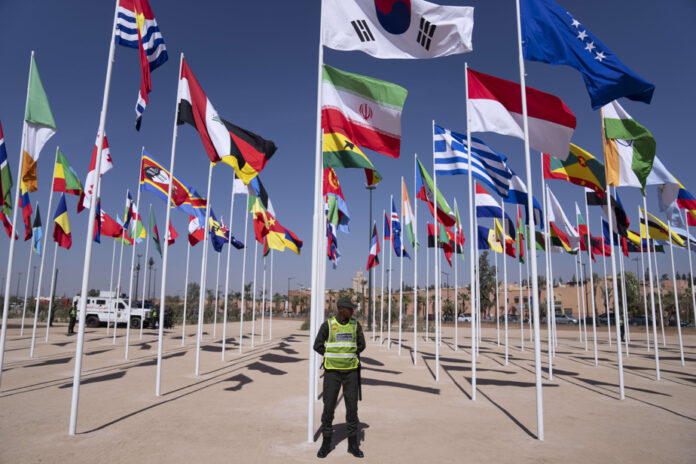(Marrakech) The International Monetary Fund (IMF) maintained its growth forecasts for the global economy in 2023, despite the signs of weakness displayed by several major economies, according to its data published Tuesday.
The institution still expects global growth of 3% for 2023, and only slightly lower in 2024, at 2.9%, a slight decline (-0.1 percentage point) compared to its previous estimate , in July.
“The global economy continues to recover from the pandemic and Russia’s invasion of Ukraine and is showing remarkable resilience. But growth remains weak and uneven, below historical averages, with significant divergences appearing,” summarized the IMF’s chief economist, Pierre-Olivier Gourinchas, on Tuesday at a press conference.
The situation is indeed contrasted, both among advanced economies and between the main emerging countries, with some seeing their forecasts improve very significantly while others, mainly in Europe, are slowing down or even experiencing a slight recession.
The reason is the persistence of certain shocks, in particular the Russian invasion of Ukraine. Inflation is taking time to slow, pushing central banks to continue their restrictive monetary policy with high interest rates.
The Fund therefore anticipates higher inflation than what it forecast three months ago, both for this year (6.9% globally) and next year (5.8%, or 0.6 point more than expected in July).
“The news on inflation is encouraging, but we are not there yet […] and for the moment most countries will not return to target inflation (of 2%, editor’s note) before 2025,” added Mr. Gourinchas.
The opportunity for the IMF to reiterate the importance, according to it, of not relaxing restrictive policies too soon.
Among advanced economies, Germany shows the most worrying signs, with an increasingly certain recession for this year (-0.5%), and deeper than expected, then a weak recovery next year (0 .9%), while the IMF, in July, expected better.
After lagging behind last year among the G7 countries, but also compared to other major European economies, the continent’s leading economy will be the only one in recession this year and thus seems to confirm its status as a “sick man” of Europe.
“There is a combination of two major factors, on the one hand the energy shock caused by the war in Ukraine in a country very dependent on Russian energy, on the other hand the tightening of monetary policy,” detailed M .Gourinchas, interviewed by AFP.
Other European economies are holding up better: forecasts for France improve slightly for this year (1% expected or 0.2 points better than anticipated in July) while Spain remains solid (2.5% for 2023 ).
The Italian economy is stalling, but remains in positive territory this year (0.7%), just like, outside the EU, the United Kingdom, which remains faced with sluggish growth (0.5%).
The situation is different across the Atlantic. The American economy is expected to grow by 2.1% in 2023, far from the recession long predicted by many economists, before slowing significantly in 2024, to 1.5%.
As for large emerging countries, the Chinese slowdown is confirmed (5% this year, 4.2% in 2024, forecasts revised slightly downwards), while the country is suffering from a real estate crisis.
“It is possible to relax monetary policy and put in place support measures on the budgetary level,” underlined Mr. Gourinchas during the press conference, “we encourage the authorities to act in this direction and I think that ‘they do’.
The other major emerging countries are experiencing a more positive trend, with an upwardly revised forecast for 2023 in both India (6.3%, 0.2 points) and Latin America, where Brazil (3.1%, 1 .0 points) is benefiting from good performance in raw materials markets, while Mexico (3.2%) is one of the main beneficiaries of the reorganization of supply chains between China and the United States.
As for Russia, whose forecasts a year ago predicted a severe recession for 2023, it continues to see them improve, and is expected to end the year with growth of 2.2%, driven by notably the sharp increase in public spending linked to the war in Ukraine and an increase in the public deficit.















